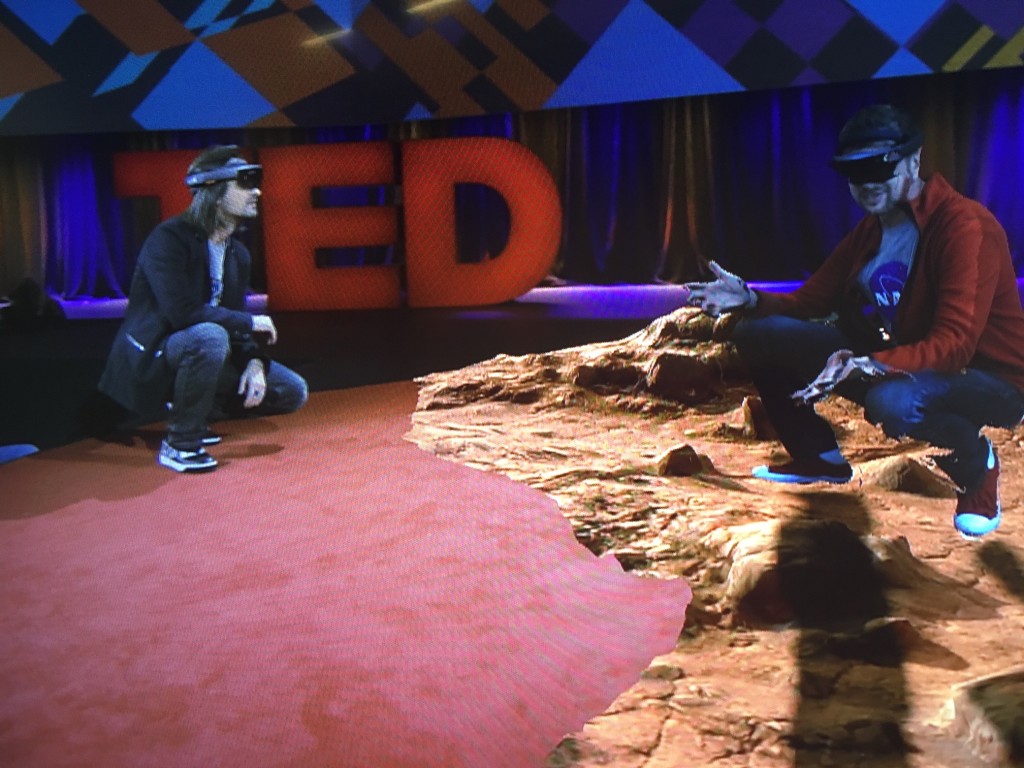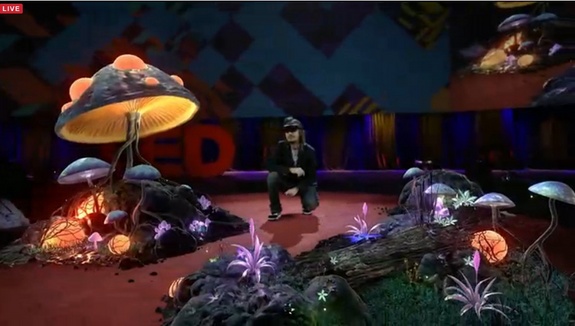Just after Meta demoed the latest version of its augmented reality headset, Microsoft was not one to be upstaged. HoloLens developer Alex Kipman took to the floor of the TED2016 conference to virtually teleport a NASA onto the stage of the event, while simultaneously projecting him onto the surface of Mars.
At the auditorium in Vancouver, NASA’s Jeff Norris, of the Jet Propulsion Laboratory, appeared on stage. Though Norris was physically across the street from the event, Kipman could see, through his mixed reality headset, a “hologram” of Norris walking and talking in front of him and, beneath his feet, the surface of the Red Planet. Norris said to the TED audience, “I’m actually in three places. I’m standing in a room across the street, while I’m standing on the stage with you, while I’m standing on Mars a hundred million miles away.”
The Martian environment was created through data collected by NASA’s curiosity rover, allowing for a startlingly real replica of the planet’s surface. And, as exciting as that may be, the real gem of the show was this new application of Microsoft’s HoloLens: the ability to overlay multiple “holograms” into the same space and even project entirely new settings around a user. The benefits for researchers, who may often be located in completely different parts of the world, is obvious, as remote team members can virtually share the same data. And, more than that, they can completely immerse themselves in this data.
NASA is among Microsoft’s first users of the HoloLens, developing what they call OnSite, a platform to allow scientists to explore planets virtually. Outside of NASA, however, Case Western University is using the technology to create virtual anatomical models for medical education and Volvo is using the headset to design cars. Perhaps the most exciting application may be the use of the HoloLens aboard the International Space Station, which allows crews back on Earth to help the ISS team.
“Today a group of scientists on our mission are seeing Mars as never before, an alien world made a little more familiar because they are finally exploring it as humans should,” Norris said of OnSite project. “But our dreams don’t have to end with making it just like being there. If we dial this real world to the virtual, we can do magical things. We can see in invisible wavelengths or teleport to the top of a mountain. Perhaps some day we’ll feel the minerals in a rock just by touching it.”
Kipman explained his take on the potential for this technology, “Put simply I want to create a new reality. A reality where technology brings us infinitely closer to each other, a reality where people, not devices, are at the center of everything. I dream of a reality where technology senses what we see, touch and feel, a reality where technology no longer gets in the way but instead embraces who we are.” He added, “This is the next step in the evolution. This is Microsoft Hololens, the first fully untethered holographic computer. I’m talking about freeing ourselves from the 2D confines of traditional computing.”
The HoloLens utilizes a variety of sensors, a fish-eye lens, and what Microsoft refers to as a “holographic processing unit” to power its device. Altogether, this allows the HoloLens to perform spatial mapping at five frames per second. While Microsoft emphasizes the new digital objects with which you’ll be able to populate your environment, there are implications for 3D printing abound. You may be able to 3D scan items around you to modify them virtually before 3D printing them into reality.





